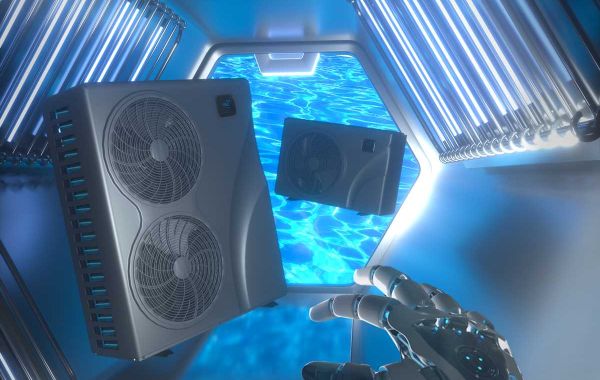Trend
Swimming pool construction has been a popular trend in Europe for several decades. Many homeowners in Europe consider having a swimming pool as a luxurious addition to their properties. The popularity of swimming pool construction has increased in recent years due to the improved economic conditions and increased leisure time.
In addition to being a great source of entertainment and relaxation, swimming pools offer several health benefits. Swimming is a low-impact form of exercise that can help improve cardiovascular health, strengthen muscles, and improve flexibility.
The construction of swimming pools in Europe has also been influenced by advancements in technology and design. Today, homeowners can choose from a wide range of pool designs, sizes, and features that can be customized to suit their preferences and needs.
The popularity of swimming pool construction in Europe is likely to continue to increase as more people recognize the benefits of having a swimming pool and as the technology and design continue to evolve.
Swimming pool construction in Europe requires careful planning, adherence to regulations, and attention to detail. A swimming pool is a significant investment, and therefore, proper preparation is essential to ensure the project's success. In this article, we will discuss the preparations required for swimming pool construction in Europe, with a particular focus on swimming pool heat pumps.
Site selection and preparation
The first step in swimming pool construction is site selection. The ideal location for a swimming pool is a flat, well-drained area with good sun exposure. Additionally, the site must be accessible for heavy equipment, such as excavators and concrete trucks. Before construction can begin, the site must be cleared of any vegetation and leveled to ensure the swimming pool's stability.
Building permits and regulations
In Europe, building permits are required for all construction projects, including swimming pools. The permits vary depending on the location, and the regulations are strict to ensure safety and prevent damage to the environment. Therefore, it is essential to consult with the local authorities to obtain the necessary permits and comply with the regulations before starting the construction.
Design and materials
Swimming pool design is a critical aspect of construction. The design must consider factors such as the size and shape of the pool, the type of filtration system, and the pool's aesthetic appeal. The materials used must be durable and withstand the harsh conditions of outdoor environments. Common materials used for swimming pool construction include concrete, fiberglass, and vinyl liner.
Filtration system
A filtration system is crucial to maintain water quality and prevent the growth of harmful bacteria. There are several types of filtration systems available, including sand filters, cartridge filters, and diatomaceous earth filters. The type of filtration system selected will depend on the pool's size, usage, and personal preference.
Swimming pool heat pump
Swimming pool heat pumps are an essential component of swimming pool construction. They are used to heat the water in the pool, making it comfortable for swimming throughout the year, even in colder climates. Swimming pool heat pumps use electricity to extract heat from the air and transfer it to the water, providing an energy-efficient way to heat the pool.
When choosing a swimming pool heat pump, there are several factors to consider, including the heat pump manufacturer, pool's size, location, and usage. It is essential to choose a heat pump with the correct heating capacity to ensure optimal performance. Additionally, the heat pump's installation and maintenance must be performed by a qualified professional from pool heater supplier to ensure its efficiency and longevity.
Swimming pool construction
The first step in swimming pool construction is to select a site for the pool. The site should be flat and free from any obstructions or underground utilities. Once the site is selected, the pool contractor will mark out the area where the pool will be installed. This is usually done using stakes and string.
Excavation is the next step in swimming pool construction. The pool contractor will use heavy machinery to dig a hole in the ground that is the same size as the pool. The depth of the hole will depend on the size of the pool and the local building codes. The pool contractor will then use a laser level to ensure that the hole is level.
Once the excavation is complete, the pool contractor will install the pool shell. The pool shell can be made from a variety of materials, including concrete, fiberglass, or vinyl. Concrete pools are the most common type of pool in Europe, as they are durable and can be customized to any shape or size. Fiberglass pools are pre-molded and come in a limited number of shapes and sizes. Vinyl pools are the least expensive option, but are not as durable as concrete or fiberglass.
After the pool shell is installed, the pool contractor will install the plumbing and electrical systems. This includes installing the pool pump, filter, and heater. The pool contractor will also install the pool lights and any other features, such as a waterfall or fountain.
Once the plumbing and electrical systems are installed, the pool contractor will backfill around the pool shell and install the coping and decking. Coping is the material that covers the edge of the pool and provides a finished look. Decking is the material that surrounds the pool and provides a space for lounging and entertaining.
Swimming pool maintenance
Proper maintenance is essential to ensure that your swimming pool remains safe and functional for years to come. Regular maintenance includes:
Cleaning the pool: This includes removing debris from the water, brushing the walls and floor of the pool, and cleaning the skimmer and pump baskets.
Maintaining the water chemistry: This includes testing the water regularly and adding chemicals as needed to maintain the proper pH and chlorine levels.
Checking the equipment: This includes inspecting the pump, filter, heater, and other equipment regularly to ensure that they are functioning properly.
Winterizing the pool: In colder climates, it is important to winterize the pool to protect it from damage caused by freezing temperatures.
Opening the pool: In the spring, it is important to properly open the pool and remove any winterizing chemicals before the pool can be used again.
It is important to note that swimming pool maintenance can be time-consuming and requires some knowledge of pool chemistry and equipment. Many pool owners choose to hire a professional pool maintenance company to handle the maintenance of their pool.
In conclusion, swimming pool construction and maintenance require careful planning, design, and execution. Selecting the right site, installing the pool shell and equipment, and properly maintaining the pool are essential to ensure that your pool remains safe and functional for years to come. Whether you choose to install a concrete, fiberglass, or vinyl pool, proper maintenance is key to enjoying your pool for many summers to come.

 pool heater supplier
pool heater supplier






